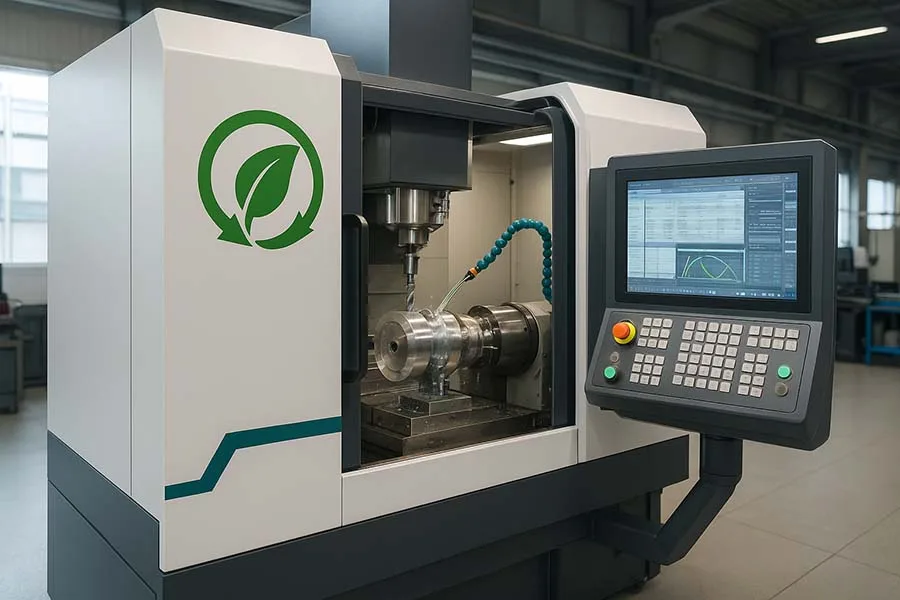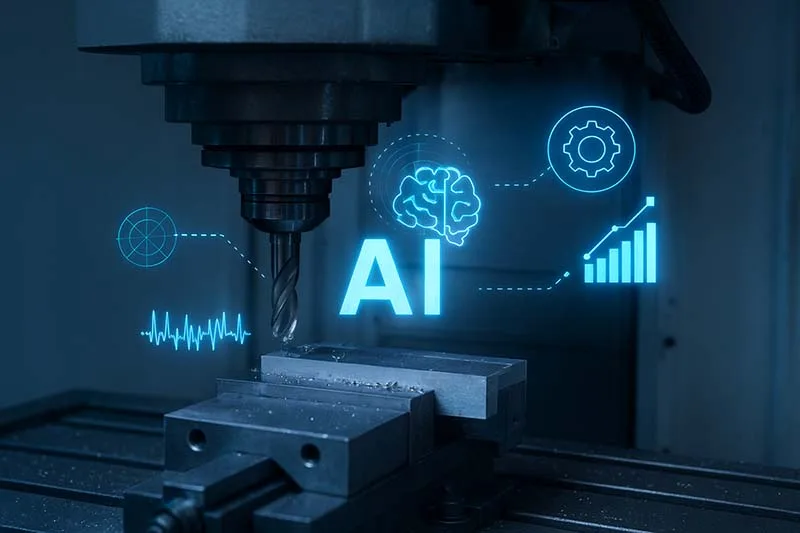CNC machining has revolutionized manufacturing, offering unmatched precision, speed, and consistency. However, these machines consume significant energy, often impacting both operational costs and environmental sustainability. Today, companies are increasingly recognizing the importance of energy efficiency and eco-conscious practices in CNC environments—not just for regulatory compliance, but also for long-term profitability and corporate responsibility.
Why Sustainability Matters in CNC Machining
Sustainability isn’t just a buzzword; it’s a strategic imperative. CNC machines are high-power devices, and manufacturing processes often involve electricity-intensive operations such as spindle rotation, coolant circulation, and tool changes. Inefficient energy use leads to higher operational costs and an increased carbon footprint.
Key drivers for sustainability in CNC include:
- Rising energy costs: Efficient CNC operations directly reduce electricity bills.
- Regulatory compliance: Governments and industrial standards increasingly mandate energy-efficient practices.
- Corporate responsibility: Consumers and B2B clients value eco-conscious production practices.
Transitioning to energy-efficient CNC practices offers both environmental and financial benefits—a win-win for manufacturers.
Energy-Efficient CNC Practices
Implementing energy efficiency in CNC machining requires a combination of equipment, process optimization, and operational strategies. Here are some practical approaches:
1. Choose Energy-Efficient CNC Machines
Modern CNC machines often have energy-saving modes, advanced drives, and optimized motors. When investing in new equipment:
- Look for machines with regenerative drives that recover energy during deceleration.
- Consider machines with variable-speed motors to reduce energy during low-load operations.
2. Optimize Machining Parameters
Even small adjustments in machining parameters can lead to significant energy savings:
- Feed rate and spindle speed: Use CNC simulation software to identify the most energy-efficient cutting speeds.
- Toolpath optimization: Reducing unnecessary tool movements minimizes idle machine time and energy use.
3. Implement Smart Energy Management
Energy monitoring systems can track real-time power usage across the shop floor, identifying areas of high consumption. Features to consider:
- Automatic standby modes during inactivity.
- Predictive maintenance to prevent energy waste from worn-out components.
4. Use Eco-Friendly Coolants and Lubricants
Coolants and lubricants not only improve machining efficiency but also affect sustainability. Choosing biodegradable or recyclable options reduces environmental impact and disposal costs.
5. Recycle and Reduce Waste
Efficient material use and recycling of metal chips or other byproducts lower both material costs and environmental footprint. Consider CNC chip recycling programs to minimize landfill contribution.
Case Study: Real-World Impact
A medium-sized automotive parts manufacturer implemented an energy monitoring system and optimized toolpaths across their CNC fleet. Within six months:
- Energy consumption dropped by 18%
- Carbon emissions reduced by 12 tons annually
- Annual electricity costs decreased by $15,000
This example illustrates that sustainability isn’t just about “being green”—it’s directly tied to operational efficiency and cost reduction.
Emerging Trends in CNC Sustainability
The future of CNC machining is increasingly intertwined with sustainability:
- Hybrid machines combining additive and subtractive processes reduce material waste.
- AI-driven CNC optimization predicts the most energy-efficient machining strategies.
- Integration with renewable energy sources ensures greener shop floor operations.
These trends highlight that energy efficiency and sustainability are becoming central to competitive advantage.
Funny Fact
Some CNC machines now come with “eco modes” that slow operations just enough to save energy—so technically, your machine is taking a coffee break, too!
Lesser-Known Fact
Regenerative drives in CNC machines can feed excess energy back into the factory grid—turning braking into a tiny power plant on the shop floor.
Conclusion
Sustainability and energy efficiency in CNC machining are more than environmental ideals—they’re business imperatives. By adopting energy-efficient machines, optimizing processes, and monitoring energy use, manufacturers can reduce costs, minimize waste, and improve their corporate footprint. Forward-thinking companies that embrace these practices are positioning themselves for both economic and environmental resilience.
Call to Action:
Have you implemented energy-saving strategies in your CNC operations? Share your experiences in the comments below and help inspire sustainable innovation across the industry!





